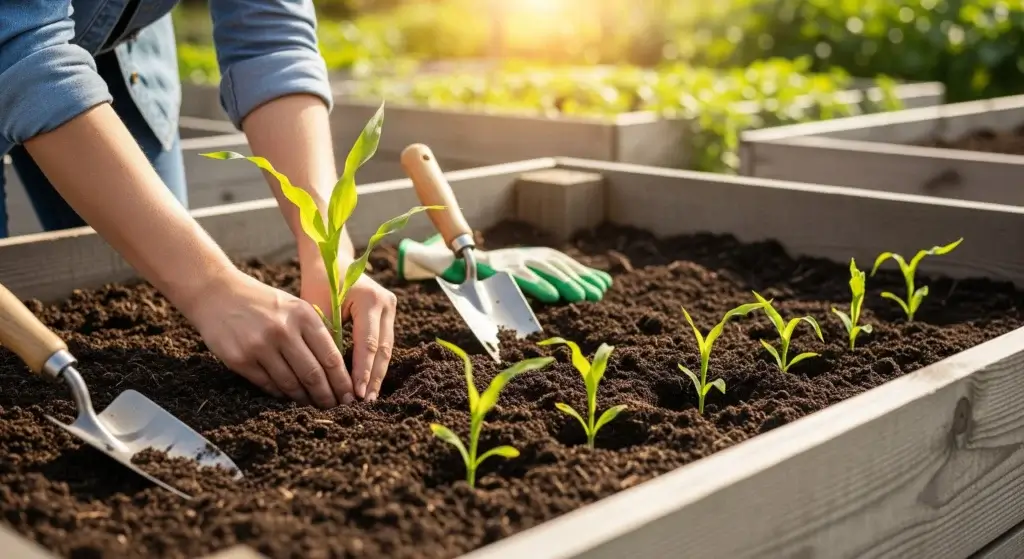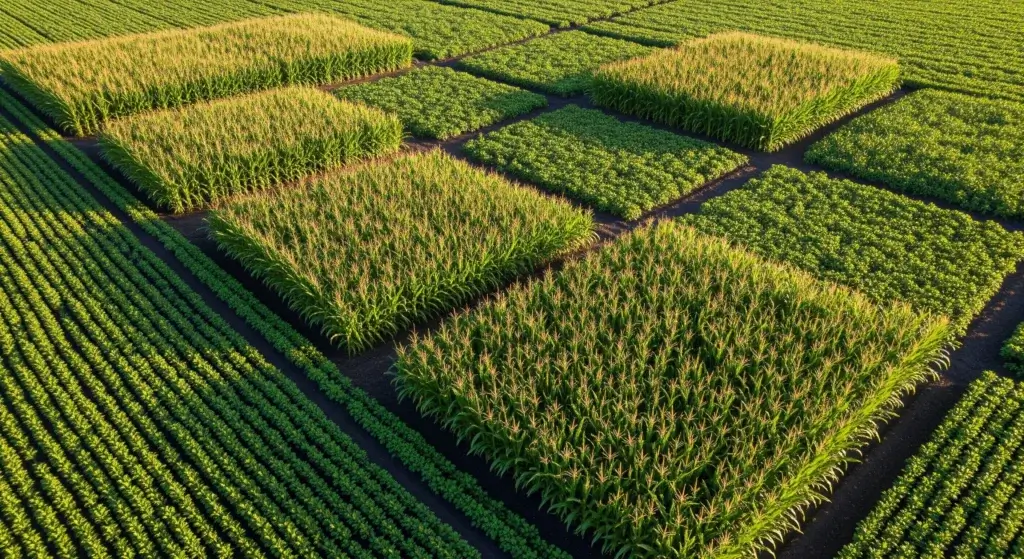
Malabar spinach, a versatile and nutritious leafy green, is a popular choice for home gardens due to its rapid growth and adaptability.
To ensure optimal growth and maximize yield, it is crucial to provide Malabar spinach with adequate space.
Let’s explore the importance of proper spacing for Malabar spinach and delve into the factors that influence the ideal distance between plants.
About Malabar Spinach
Malabar spinach (Basella alba or Basella rubra) is a fast-growing, vining plant that’s not a true spinach but offers similar nutritional benefits.
It thrives in warm, humid climates and is often grown in tropical and subtropical regions.
This leafy green is packed with vitamins A and C, as well as iron and calcium.
Its thick, succulent leaves are ideal for stir-fries, soups, and salads, and the plant’s red or green vines add a beautiful touch to gardens.
One of the best things about Malabar spinach is its versatility—it can be grown both in containers and directly in the ground.
However, its vigorous vining nature requires careful planning when it comes to spacing.
Proper spacing ensures the plant has room to climb, spread, and develop without competing for resources.
- Read also: Tips for Thriving Plants: Guide to Longevity Spinach Care
- Read also: Prevent Spinach from Bolting: Understanding Causes and Solutions
| Factor | Optimal Condition | Tolerances |
| Sunlight | Full sun to partial shade | Thrives in full sun but can tolerate some shade |
| Temperature | Warm temperatures (65-90°F) | Tolerates cooler temperatures, but growth may be slower |
| Soil | Well-draining, fertile soil | Can tolerate a range of soil types but prefers rich, loamy soil |
| Moisture | Consistent moisture, but not waterlogged | Can tolerate brief periods of drought but prefers regular watering |
| pH | Slightly acidic to slightly alkaline (pH 6.0-7.5) | Tolerates a range of pH levels range from 4.3 to 7.5 |
| Spacing | 6-12 inches between plants | Can be spaced closer together in containers or for a dense ground cover |
| Support | Can be grown as a vining plant or allowed to trail | May benefit from support if grown as a vining plant |
| Frost sensitivity | Extremely sensitive to frost | Should not be planted until soil temperatures reach at least 18°C–24°C (65°F–75°F) |

Factors Affecting Spacing
When growing Malabar spinach, spacing is important for healthy growth and a productive harvest.
Several key factors influence how much space your plants need. Let’s explore them in detail:
Growth habits
Malabar spinach is a vining plant that can reach impressive heights if given support.
It can grow as tall as 10 feet, making it crucial to provide enough space for both vertical and lateral spread.
Without proper spacing, the vines can become tangled, leading to poor air circulation, which might encourage diseases.
- Vertical space: Install a sturdy trellis or support system to allow the vines to grow upward. This also prevents overcrowding.
- Lateral spread: The vines can spread out several feet wide, so make sure each plant has enough room to expand.
Light availability
Like many plants, Malabar spinach thrives in full sun but can also tolerate partial shade.
However, the amount of light a plant receives affects its growth rate and size.
Plants in full sun will likely grow larger and faster than those in shaded areas.
Ensure that plants are spaced in such a way that none are overshadowed by others, which could limit light exposure and stunt their growth.
Soil quality and nutrients
Rich, well-drained soil is essential for Malabar spinach to thrive.
If the soil is nutrient-poor, plants may struggle to grow.
In fertile soil, plants may grow more vigorously and require more space.
It’s a good idea to add compost or organic matter to your soil to boost its fertility before planting.
Watering needs
Malabar spinach loves moist soil but doesn’t tolerate waterlogged conditions.
Proper spacing ensures that plants don’t compete too much for moisture, which can be especially important in hot climates or during dry spells.
If plants are too close, they may compete for water, leading to stunted growth.
By spacing plants correctly, you’ll ensure that each one has enough access to water without drying out or suffering from over-saturation.

Malabar Spinach Spacing When Seeding
When starting Malabar spinach from seed, initial spacing is crucial.
The seeds can be directly sown into the ground or started indoors and later transplanted.
Here are the common recommendations when seeding Malabar spinach:
Direct sowing
Seeds should be sown ¼ inch deep in rows spaced 12 to 18 inches apart, with 1 to 2 inches between individual seeds.
Thinning should occur once the seedlings emerge, resulting in approximately 6 inches between adjacent plants.
For optimized spacing, some experiments suggest that tighter spacings can enhance growth and yield.
For instance, a study on Indian spinach (which shares similar characteristics with Malabar spinach) found that a spacing of 50 cm x 50 cm yielded better results in terms of plant length, branching, and total biomass.
Another recommendation suggests planting seeds 1 inch deep and 1 inch apart in rows 2.5 feet apart, later thinning to 1 foot apart.
However, this might be more applicable to temperate climates rather than tropical ones.
In summary, for optimal growth and ease of management, direct seeding with initial spacings of 1 to 2 inches between seeds and subsequent thinning to about 6 inches between mature plants is generally advised.
Tighter spacings like those tested in the experiment mentioned earlier can potentially increase productivity, though they may require additional care and support.
Indoor seeding
If starting seeds indoors, plant them in small pots or trays and give them enough room to develop strong roots before transplanting.
Once they’re ready for the garden, follow the appropriate spacing guidelines for either container gardening or directly in the ground.
Indoor seeding protects young plants from frost, which is crucial since Malabar spinach is sensitive to cold temperatures

- Read also: Step-by-Step Plan: 5 Steps on How to Grow Spinach Indoors
- Read also: Tips and Techniques: A Guide on How to Plant Spinach Seeds
Container Gardening
If you’re short on space or prefer growing Malabar spinach in pots, container gardening is an excellent option.
However, spacing in containers requires careful consideration since the roots and vines need room to grow.
- Container size: Choose a large container with a minimum depth of 12–18 inches to provide enough room for the roots to spread. Ideally, the container should be at least 12–18 inches wide to accommodate one plant.
- Plant spacing: For smaller containers (12 inches wide), plant one Malabar spinach per pot. If using a larger container (18–24 inches wide), you can plant two to three plants, but ensure each plant has at least 8–12 inches of space between them.
- Trellising: Since Malabar spinach is a climber, installing a trellis or support system in the container will maximize vertical space and prevent overcrowding. The vines will grow upward, allowing for healthier plants and better airflow.
Conclusion
To achieve maximum yield when growing Malabar spinach, proper spacing is key.
By considering factors like the plant’s climbing growth habits, light availability, soil quality, and watering needs, you can create an ideal environment for your plants to thrive.
Ensuring enough vertical and lateral space, allowing ample sunlight, providing nutrient-rich soil, and maintaining consistent moisture levels will all contribute to healthier, more productive plants.
With the right spacing, you can optimize both the growth and yield of Malabar spinach, ensuring a bountiful harvest season after season.
FAQs
In tropical and subtropical regions, Malabar spinach can grow year-round. In cooler climates, it’s best to grow it as an annual or bring it indoors during the colder months.
While closer spacing may require more maintenance, such as thinning or pruning, it can also result in a denser ground cover and reduced weed growth. The optimal spacing depends on your specific goals and preferences.



